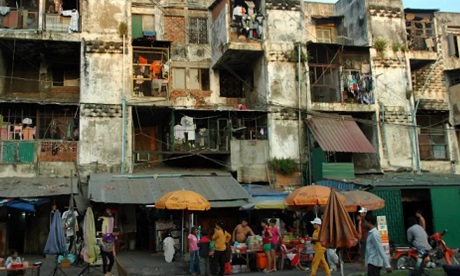According to a World Bank Poverty Assessment Report, the Covid pandemic has forced around 460,000 Cambodians into poverty.
It followed a decade of unprecedented economic growth and poverty reduction in Cambodia.
At that time, the global economy was experiencing strong growth rates.
The report “Toward A More Inclusive and Resilient Cambodia” notes Cambodia’s poverty rate fell by almost half – from 33.8 percent to 17.8 percent – between 2009 and 2019.
Almost two million Cambodians escaped poverty.
The pandemic reversed this. Cambodia’s poverty reduction progress and the poverty rate has since increased by 2.8 percentage points.
This means around 460,000 people have fallen below the poverty income threshold.
“Efforts to accelerate Cambodia’s structural transformation have helped reduce poverty,” said Maryam Salim, the World Bank’s Country Manager for Cambodia.
“However, despite this impressive success, many households remained vulnerable, with few savings or safety nets. This meant Covid-19 dealt a setback [to] the country’s progress in combating poverty as employment and wages diminished.”
Cambodia has recently redefined the poverty line.
It now uses the most recent Cambodia Socio-Economic Survey for 2019/20, the World Bank says. The national poverty line fluctuates. Currently, it is the equivalent of US$2.15 per person per day.
An exodus of Western businesses has exacerbated the Cambodian economic hardships. Their departure followed a government crackdown on opposition political parties, the media, unions, and NGOs initiated in 2017.
Chinese investment and generosity emerged as the most significant foreign contributor to the national economy. That, too, faded as the pandemic took hold.
The World Bank says during Cambodia’s decade-long growth phase, “rising non-farm earnings, for example in the tourism, garment and construction sectors, contributed most to poverty reduction.”
At the same time, trade and investment-led growth supported a structural transformation in Cambodia’s economy. Workers moved out of low-paying agriculture jobs and boosted their earnings. More productive sectors followed, creating better-paid manufacturing and services jobs for Cambodians.
“At the same time, living conditions and access to basic services such as electricity, water supply, sanitation, health and education improved for broad segments of the population. This improvement has narrowed standard-of-living gaps between rural and urban households,” the report says.
As the economy tanked, Cambodia was widely praised for a swift roll-out of its Covid-19 vaccination programme. It was one of the first countries in Southeast Asia to ease pandemic travel restrictions and open up its borders.
The World Bank said Cambodia could consider a range of policy actions to support a more inclusive and resilient recovery from the pandemic and the economic shocks that have come with it.
“These include targeted cash transfers, steps to strengthening social protection, investments in health and education,” the report says.
Source
